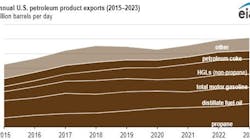By OGJ editors
HOUSTON, Feb. 20 -- The New Mexico Energy, Minerals and Natural Resources Department has filed a letter of protest with the US Department of the Interior's Bureau of Land Management (BLM) concerning development of Otero Mesa grasslands.
The New Mexico Environment Department and the Department of Game and Fish also have issued protest letters, saying that the Chihuahuan Desert and grasslands are at risk in the counties of Otero and Sierra.
"The BLM has conducted a 'bait and switch' of the proposed plan and reduced protection of our natural resources. It's unacceptable," New Mexico Cabinet Secretary Joanna Prukop said in a news release earlier this month.
BLM announced Jan. 6 a controversial plan 5 years in the making, allowing limited development in New Mexico's Otero Mesa grasslands. But environmentalists and New Mexico Gov. Bill Richardson oppose the plan.
If the BLM proposal moves forward, an estimated 140 new wells could be drilled in the region, about 90 miles southeast of Las Cruces, NM. (OGJ, Jan. 26, 2004, p. 28).
Prukop said BLM should close the area to drilling, adding that BLM has "failed to require non-negotiable reclamation standards and criteria by not requiring a permanent cover of native species capable of self-regeneration. The expectations for revegetation described cannot be accurately called 'reclamation' or 'restoration.'"
Harvey E. Yates Co. (HEYCO), Roswell, NM, made the first commercial gas discovery on federal land in the Orogrande basin in August 1997. The discovery was on federal land, but gas deposits are believed to range over large areas and have attracted the attention of various companies.
Orogrande potential has been likened to the 19 tcf of gas equivalent produced from pre-Leonardian formations in Eddy, Lea, Chaves, and Roosevelt counties (OGJ, Mar. 18, 2002, p. 50).
